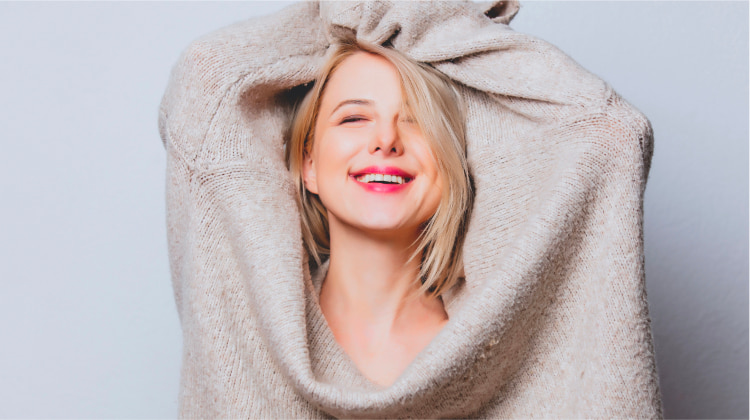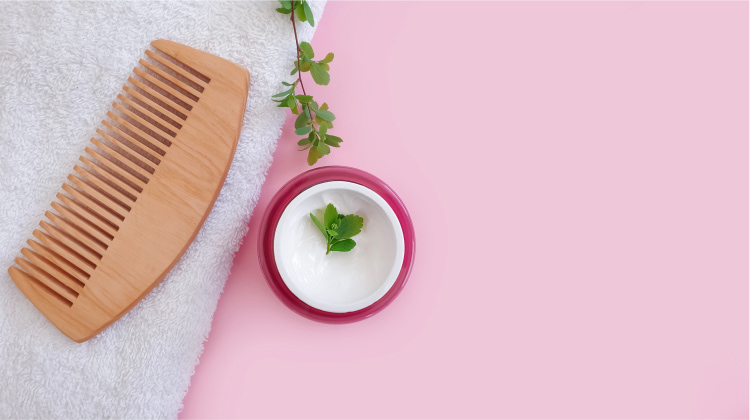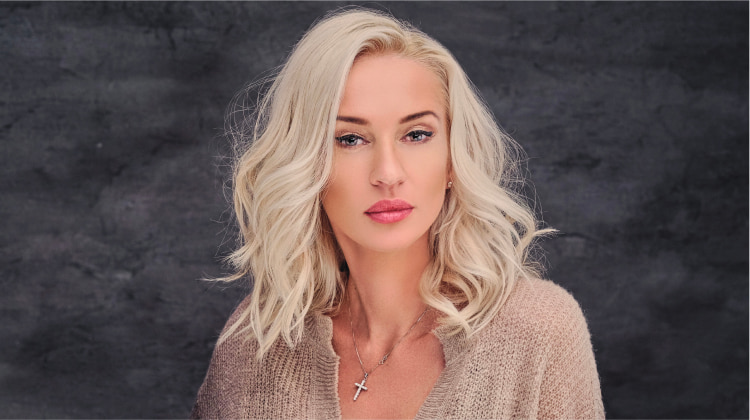
Have you ever found yourself in a hair emergency after a home bleaching session gone wrong? You're not alone! We've all been there—eager to flaunt our sun-kissed locks, only to discover that our bleached hair is uneven and patchy. Fret not, because we have your back!
In this article, we'll dive deep into how to fix uneven bleached hair, so you can confidently rock that blonde look without breaking the bank. Read on to learn about fixing uneven hair color after bleaching, why it happens, and what you can do to prevent it. So, grab your hairbrush, and let's get started on your journey to hair redemption!
How to Fix Uneven Hair Color after Bleaching
We know you're eager to fix your badly bleached hair, so let's jump right into the best ways to fix uneven bleached hair at home! We've combined tips and tricks to give you a comprehensive guide on how to achieve that perfect blonde look. Here's what you need to do:
Evaluate The Situation
Before diving in, take a good look at your hair. Identify the severity and the location of the unevenness. Is it slightly uneven, or are we dealing with a total hair catastrophe? Is it only at the roots, or does it extend to the mid-lengths and ends? Knowing the details will help you choose the best course of action.
Deep Condition

Uneven bleaching can leave your hair dry and damaged. Start by applying a deep conditioning treatment(1) specifically designed for color-treated or damaged hair. Look for ingredients like argan oil, keratin, and shea butter to nourish and moisturize your locks, improving their overall health and manageability.
Toners
Toner can be a lifesaver when it comes to correcting uneven bleached hair. It neutralizes unwanted brassy or yellow tones and evens out the color. Choose a toner that matches your desired shade and the undertones of your uneven hair color.
For example, if your hair has yellow tones, a purple toner would be suitable, while a blue toner can help counteract orange tones. Follow the instructions on the packaging.
Color Correctors
If toning doesn't do the trick, consider using a color-correcting product to even out your hair color. These products come in various forms, such as shampoos, conditioners, and treatments. Pick one that works best for your hair type and color, and follow the manufacturer's instructions.
Consider performing a strand test to ensure the product provides the desired results without causing further damage to your hair.

Use a Hair Mask
Regularly using a hair mask can help restore your hair's health and prevent further damage(2). Look for masks specifically designed for color-treated hair and apply it at least once a week. Leave it on for the recommended time, usually around 20-30 minutes, and then rinse thoroughly.
Balayage or Lowlights
If you're dealing with uneven bleached highlights, try adding balayage or lowlights to blend the uneven areas. This technique can create a more natural and seamless transition between the different shades of your hair.
While these techniques can be done at home, for best results, consider seeking the help of a professional hairstylist who can expertly apply the color.
Trim Damaged Ends
Sometimes, the best way to fix uneven bleached hair is to get rid of the damaged parts. If your ends are fried or frizzy, consider getting a trim to improve your hair's overall appearance. Aim to get a trim every 6-8 weeks, depending on your hair's condition.
Seek Professional Help
If all else fails and you're still struggling with uneven hair color, it might be time to consult a professional hairstylist. Be prepared to discuss your hair's history, including any previous color treatments, and your desired outcome. They can assess your hair and recommend the best course of action to fix the problem.
Remember, patience is key when dealing with uneven bleached hair. It might take some time and a bit of trial and error to find the right solution, but with perseverance, you'll soon be rocking that flawless blonde look you've always wanted!
What Causes Uneven Bleached Hair?

You might be wondering, "Why did my hair end up uneven in the first place?" Understanding the causes of uneven bleached hair can help you avoid the same pitfalls in the future and ensure a more successful bleaching experience next time. Here are some of the most common reasons for uneven hair color after bleaching:
Incorrect Application
One of the primary reasons for uneven bleached hair is simply applying the bleach incorrectly. This can happen if you don't distribute the bleach evenly, miss some sections of your hair during the process, or fail to follow the instructions provided with the product.
Inadequate Bleach Mixture
If you don't mix the bleach and developer in the correct proportions, it can lead to patchy results. Always follow the instructions on the packaging and use a reliable scale to measure the right amounts. A well-mixed bleach ensures a more even application and result.
Uneven Hair Porosity
Your hair's natural porosity can affect how well it absorbs the bleach. If some parts of your hair are more porous than others, they might take in more bleach and lighten faster, resulting in an uneven color. To counteract this, use a hair porosity treatment before bleaching to balance your hair's porosity levels.
Insufficient Processing Time
Not leaving the bleach on your hair long enough can lead to uneven results. However, leaving it on for too long can also cause damage(3), so it's crucial to find the right balance. Be sure to monitor your hair's progress during the bleaching process and adjust the processing time accordingly.
Inconsistent Bleach Strength
Using a bleach with a higher or lower strength than what your hair requires can cause uneven results. Be sure to choose the right strength bleach for your hair type and color. Consulting a professional hairstylist can help you make the right choice.
Overlapping Bleach
If you're touching up your roots, overlapping the bleach onto previously bleached hair can cause uneven color and damage. Be mindful of where you apply the bleach to avoid this issue and use a brush or applicator tool for precision.
Pre-Existing Hair Color or Treatments
If your hair has been previously dyed or treated with chemicals, it can affect how evenly the bleach takes to your hair. This might result in an uneven color or patchy areas. It's essential to consider your hair's history and make adjustments to the bleaching process if necessary.
Hair Condition and Texture
The overall health and texture of your hair can also play a role in uneven bleaching results. Healthy hair is more likely to bleach evenly, while damaged or chemically-treated hair may have unpredictable results. Similarly, if your hair has a mix of textures, such as a combination of curly and straight hair, the bleach might not process evenly across all areas.
Now that you know what causes uneven bleached hair, you can take steps to prevent it from happening again. Pay close attention to the application process, use high-quality products, and learn from your previous experiences to ensure the best possible results. And remember, practice makes perfect!
Final Thought
Dealing with uneven bleached hair can be a frustrating and disappointing experience, but don't lose hope! With the right approach and a bit of patience, you can fix uneven hair color after bleaching and achieve that flawless blonde look you've been dreaming of.
Remember to deep condition, use toners and color-correcting products, and consider techniques like balayage or lowlights to blend uneven areas. Make sure to understand the causes of uneven bleaching, such as incorrect application or hair porosity, so you can avoid these issues in the future. It's always a good idea to consult a professional hairstylist if you're struggling with badly bleached hair, as they can provide expert advice and recommend the best course of action for your specific hair type.
Frequently Asked Questions
How do you fix uneven bleached hair at home?
To fix uneven bleached hair at home, deep condition, use a toner or color-correcting products, try balayage or lowlights, apply hair masks, and trim damaged ends. Evaluate the situation and choose the most suitable method based on your hair's condition. If needed, consult a professional hairstylist.
Will toner even out bleached hair?
Yes, toner can even out bleached hair. It neutralizes unwanted brassy or yellow tones and helps achieve a more uniform color. Choose a toner that matches your desired shade and follow the instructions on the packaging.
Can purple shampoo fix uneven bleached hair?
Purple shampoo can help fix uneven bleached hair to some extent by neutralizing yellow tones. However, it may not completely even out the color. For more severe unevenness, consider using a toner or color-correcting product.
How soon can I bleach my hair again to fix it?
Wait at least two weeks before re-bleaching your hair to fix it. This allows your hair to recover and helps prevent further damage. In the meantime, deep condition and use hair masks to strengthen and nourish your hair.
References
1. Madnani, N. (2013). Hair cosmetics. Indian Journal of Dermatology, Venereology and Leprology, {online} 79, p.654. Available at: https://ijdvl.com/hair-cosmetics/.
2. Helen, I., Hadinoto, I., Hadisoewignyo, L. and Soegianto, L. (2011). Effect of Various Concentration of Vegetable Protein in Hair Mask on The Hair Texture. Indonesian Journal of Cancer Chemoprevention, {online} 2(1), p.159. doi:https://doi.org/10.14499/indonesianjcanchemoprev2iss1pp159-168.
3. JEONG, M.-S., LEE, C.-M., JEONG, W.-J., KIM, S.-J. and LEE, K.-Y. (2010). Significant damage of the skin and hair following hair bleaching. The Journal of Dermatology, {online} 37(10), pp.882–887. doi:https://doi.org/10.1111/j.1346-8138.2010.00916.x.

.jpg)
.jpg)
.jpg)
.jpg)
.jpg)
.jpg)
.jpg)
.jpg)
.jpg)
.jpg)